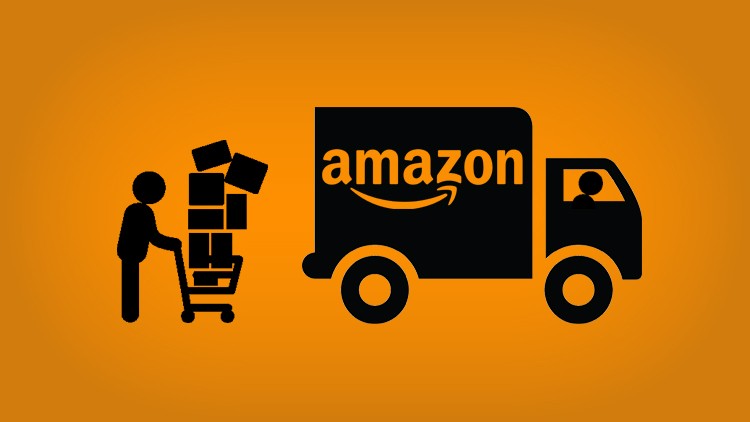There is a lot of talk about “supply chain” these days. If you’re an executive, a manager or even simply interested in how your favorite products came to be, then it’s important that you understand what a supply chain is and how it works. The supply chain is a simple concept: it refers to all of the steps involved between when raw materials are sourced until they come out of the factory door as finished goods ready for retail sale.
There are many components to supply chains; however, this article will focus on some of the main ones that businesses should be aware of as they navigate their way through today’s global economy.
How Does the Supply Chain Work?

A supply chain is a network of organizations that work together to produce and deliver products or services to customers. It’s different from a traditional business model in that it relies on collaboration between multiple entities, rather than just one organization. A supply chain can be broken down into three phases: production (the creation of goods), distribution (getting those goods from the production facility to retailers), and consumption (the sale of these products).
To understand how this works out in real life, think about how you buy something at your local grocery store–say, eggs. You go through several steps before getting those eggs home: they were made by farmers; they were transported via truck or train; someone packaged them up into cartons; another person put those cartons on pallets; yet another person loaded those pallets onto trucks or trains; finally someone else unloaded them at various stores around town where you eventually bought them!
A Basic Look at Supply Chains
Supply chain is the process of getting a product from a producer to a consumer. The supply chain involves multiple steps, including production, distribution, and retail. It also includes all of the components within those steps like raw materials or parts that make up products.
The supply chain is an important part of business because it helps companies manage their costs and increase profits by lowering overhead expenses such as shipping costs by finding cheaper routes for transporting products.
The supply chain is also important to businesses because it gives them an advantage over their competitors by allowing them to deliver goods faster than others. This allows them to get ahead of the competition, which can lead to higher sales and profits.
What Are the Components of a Supply Chain?
Supply chain management is the process of planning and coordinating the flow of materials and information from the point of origin, throughout their use and distribution, all the way to their final destination. Supply chains are complex because they encompass many different departments within an organization, including suppliers, distributors and warehouses.
Supply chain management also includes freight forwarding services like freight insurance coverage; customs compliance/regulatory affairs management (CAM); inventory control systems; warehousing services like warehouse management systems (WMS) that help track inventory levels in real time so you can restock items quickly when needed; transportation services such as trucking companies; etc.
Suppliers and Distributors
Suppliers are the companies that provide the goods and services to be sold by a business. They are usually suppliers of raw materials, such as wood pulp for paper production or metal ore for steelmaking. Suppliers also include service providers like banks or accounting firms, who help your company manage its finances and handle taxes.
Distributors are middlemen who sell goods on behalf of the supplier; they’re often involved in buying products from manufacturers and reselling them at retail stores or online sites like Amazon (though there are now plenty of exceptions). Distributors may have their own storefronts too–for example, Walmart is both a retailer and distributor because it buys products from other companies then sells them under its own brand name at stores around the country (or world).
Suppliers and distributors are important to your supply chain because they allow businesses to focus on their core competencies: what makes them unique compared with other organizations within their industry sector!
Warehousing and Storage Services
Warehousing and storage are two distinct services that can be provided by a logistics company. Warehousing is a temporary storage of goods, while storage is permanent. The main difference between warehousing and storage facilities is that the former are owned or leased by their owners, while the latter are owned by third parties.
Warehouse operators have several options when it comes to choosing where they want to store their inventory: they can purchase land and build their own warehouse or rent space from someone else who owns one (this may include public agencies). Storage facilities are usually built specifically for this purpose; however, some warehouses also double as storage units if they have enough room available!
Freight Forwarding and Transportation Services
Freight forwarding and transportation services are essential for any business that wants to ship goods from one place to another. Canadian logistics companies like Interlane help you manage the process of getting your products from point A to point B, so you don’t have to worry about it yourself.
Freight forwarding is essentially a service that connects buyers, sellers and carriers (people who transport goods). It’s like an intermediary between parties involved in international trade: the freight forwarder acts as an agent for all three parties by handling customs documentation and other paperwork required by governments at both ends of your shipment’s journey; they also ensure everything goes smoothly throughout every step of its progress through ports or airports until it reaches its final destination.
Customs Compliance and Regulatory Affairs Management
Customs compliance is a critical part of the supply chain process. It involves ensuring that you are in compliance with all applicable customs laws, regulations and procedures. This can be done by either having your own internal staff or outsourced professionals handle it for you. The latter option is becoming more popular as companies realize the benefits of outsourcing this function to ensure they remain compliant with regulations around the world while saving time and money.
Regulatory affairs management (RAM) refers to managing risk associated with product approvals, registrations or licenses needed for selling products in different countries around the world. While many companies have their own regulatory departments within their company or hire consultants who specialize in regulatory affairs; others choose instead to use third-party providers who specialize in RAM services so they don’t need their own dedicated team which means less overhead costs when trying to sell products globally.
There are Many Components to a Supply Chain
A supply chain is a complex system that involves many different components. It’s often invisible to the consumer, but it plays an important role in our daily lives. The supply chain consists of numerous companies working together to provide products and services to consumers, whether they are buying food at the grocery store or purchasing clothes online. A network of suppliers, manufacturers, distributors and retailers make up this complex system.
Conclusion
In this article, we’ve covered the fundamentals of logistics. We hope that you now have a better understanding of what it means and why it’s important. To recap: logistics is the process of managing supply chains to ensure that goods and services get from one place to another as efficiently and effectively as possible. This involves coordinating a wide variety of activities including inventory management, transportation planning, packaging design, customer service support–and much more!







